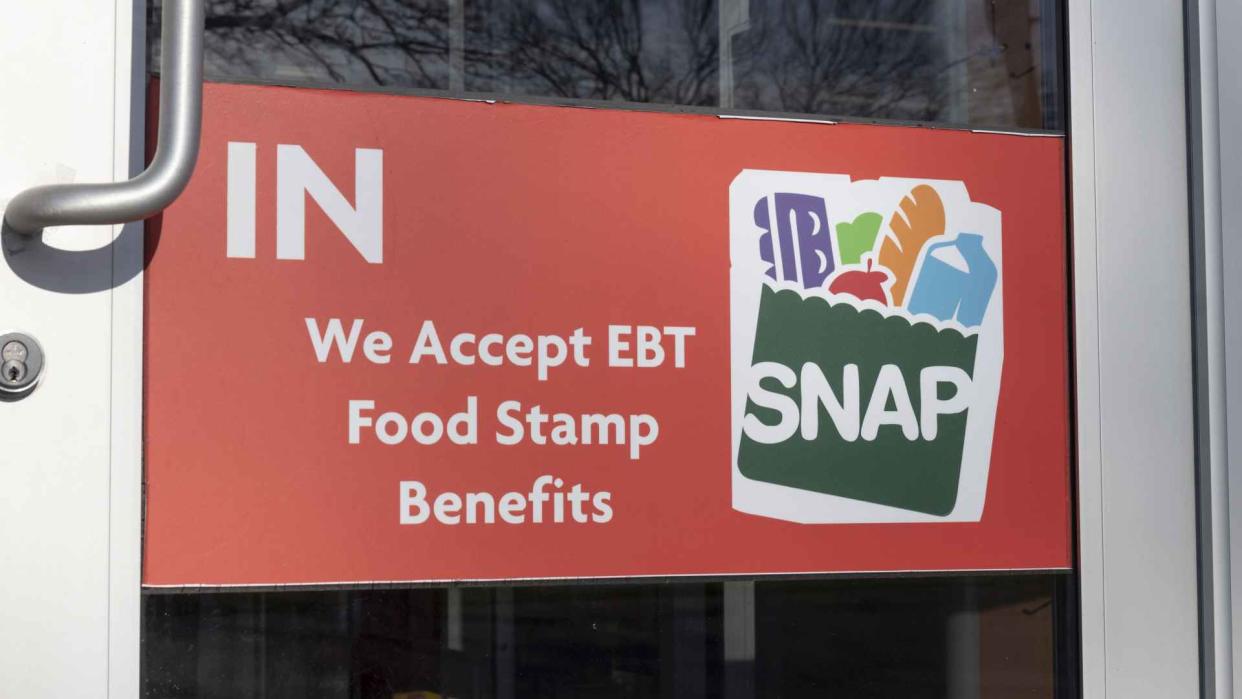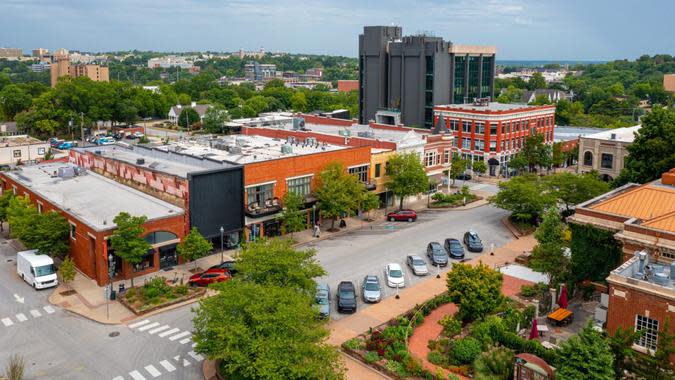Food Stamps: 4 States That Are Paying a Lot Less in SNAP — Is Yours One of Them?

At the start of 2023, America's food banks, nonprofits, churches, charities and anti-poverty advocates braced for a looming crisis the media had dubbed the "hunger cliff."
More than 30 million Americans enrolled in the Supplemental Nutrition Assistance Program (SNAP) -- the country's largest anti-hunger initiative -- faced benefits reductions as 32 states planned cuts to the program in March.
Despite grocery prices being 11.3% higher than the previous spring, the average family of four would see $328 disappear from their monthly food budget as pandemic-era emergency allotments ended.
But despite the hard times, several states saw their SNAP rolls plummet from March 2022 to the time the beefed-up benefits shrunk back to their pre-COVID-19 amounts in March 2023.
GOBankingRates used USDA data to identify the 22 states and territories where SNAP enrollment fell during that one-year period. Most saw relatively modest declines, but four states experienced massive double-digit decreases in their SNAP rolls.
Food Stamps: Do People on SNAP Need To Work Full Time?
Learn: What To Do If You Owe Back Taxes to the IRS

New Jersey
SNAP enrollment decrease: 10.9%
New Jersey is one of four states where SNAP rolls dropped by more than 10% between last spring and this spring, a fact that is not lost on Toni Tomarazzo of the Hoboken Community Center, a 501(c)(3) that provides essential services, including a food pantry, to vulnerable populations in Hoboken, N.J.
"A reduction in enrollment in SNAP has been the focus of many food insecurity agencies here in New Jersey," said Tomarazzo. "The Community Food Bank of New Jersey and various other agencies, including the Hoboken Community Center, work diligently on identifying individuals and families that are eligible for SNAP who aren't already signed up."
The state's rolls dropped from 864,280 to 769,958, and many New Jerseyans who should receive benefits are left out because of a simple lack of awareness.
"Often the reason individuals and families are not enrolled in SNAP is because they do not have access to information on the program or on how to apply for the program," said Tomarazzo. "This is especially true in populations that don't have access to online enrollment, which is becoming the preeminent way in which SNAP is captured. Also, agencies that are addressing increasing SNAP enrollment are often faced with challenges related to language barriers."
Stimulus Update: Final Checks Are Going Out Soon -- Will There Ever Be More? 7 Experts Weigh In
Food Stamps: What Is the Maximum SNAP EBT Benefit for 2023?

Maryland
SNAP enrollment decrease: 11.7%
In the year between March 2022 and March 2023, Maryland saw its SNAP enrollment drop from 763,047 to 673,642.
According to the Baltimore Banner, the sharp decline happened after the state reinstated federally required eligibility check-ins -- also called redeterminations or recertifications -- which were paused during the pandemic.
"Now, all of these effective but temporary changes have expired, despite the fact that individuals and communities are still struggling to make ends meet," said Ivy Enoch, who works closely with community organizations and both state and national partners on SNAP education and training initiatives as the food security advocacy manager for Hunger Free Vermont.
"We have all been facing sustained high food costs, and food insecurity remains high throughout the country. Though it will take time to really see the effects that the reintroduction of these requirements has on enrollment, the pandemic gave us clear evidence that making SNAP more accessible makes the program more effective at accomplishing its goal of meeting food needs and reducing food insecurity."
Stimulus Update: Final Checks Are Going Out Soon -- Will There Ever Be More? 7 Experts Weigh In

Arkansas
SNAP enrollment decrease: 20.3%
Before the pandemic, Arkansas enacted the country's strictest work requirements for Medicaid eligibility. Within seven months, the initiative -- which required proof of at least 80 hours of work per month -- reduced the state's Medicaid rolls by 25%.
In February, the Arkansas Department of Human Services unveiled the state's "comprehensive unwinding plan," which phased out pandemic-era policies that loosened eligibility requirements for Medicaid, including continuous enrollment and the removal of recertifications and redeterminations.
The unwinding plan tied SNAP eligibility to Medicaid eligibility -- as the state purged its Medicaid rolls, its SNAP enrollment plunged, too.
"The government enacted many temporary changes to make SNAP more responsive during the federal public health emergency, including increasing monthly benefit amounts, suspending the burdensome work-reporting requirements, and relaxing the restrictive rules on college student eligibility," said Enoch. "These temporary changes were essential to ensuring that SNAP was truly meeting the needs of eligible individuals."
Between March 2022 and March 2023, Arkansas' SNAP rolls dropped from 302,313 to 241,012.

Alaska
SNAP enrollment decrease: 70%
In March 2022, 96,660 Alaskans were enrolled in SNAP. One year later in March 2023, that number had fallen to just over 29,000.
The state did not experience the country's most dramatic decline because it solved 70% of its food insecurity crisis. According to the Anchorage Daily News, bureaucratic dysfunction created a backlog that left tens of thousands of Alaska's neediest families waiting months for the state to process their applications.
"The answer is to streamline the application process," said Tomarazzo. "Eligibility for SNAP in many cases can be determined by enrollment in other programs. And state, county or local governments should cross reference the other program registrations and identify individuals or families who may also be eligible for SNAP. Outreach to these potentially eligible participants directly will afford more of an opportunity to ensure food insecurity is addressed where it is needed most."
Methodology: For this piece, GOBankingRates used the U.S. Department of Agriculture's (USDA) SNAP data tables by state, published in April 2023. All data is up to date as of July 17, 2023.
More From GOBankingRates
This article originally appeared on GOBankingRates.com: Food Stamps: 4 States That Are Paying a Lot Less in SNAP — Is Yours One of Them?
